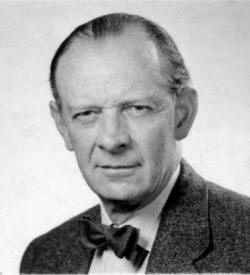

Queer Places:
University of Cambridge, 4 Mill Ln, Cambridge CB2 1RZ
Springfield Cemetery
Basseterre, Saint George Basseterre, Saint Kitts And Nevis
 Bryan Earle “Rufus” King (November 22, 1906 - June 12, 1987) was a legal scholar and anti-colonial campaigner. He was also an University lecturer. King was regarded as a Godfather by West Indians. He was the unofficial guardian of countless West Indian immigrants in Britain.
Bryan Earle “Rufus” King (November 22, 1906 - June 12, 1987) was a legal scholar and anti-colonial campaigner. He was also an University lecturer. King was regarded as a Godfather by West Indians. He was the unofficial guardian of countless West Indian immigrants in Britain.
King became a close friend, confidant and advisor to Louison during his formative years in England as an artist as well as many other important figures in West Indian history and politics such as Edward K. Brathwaite, George Lamming, The Right Excellent Sir Grantley Adams CMG, QC, David T. Pitt, aka Baron Pitt of Hampstead, British Peer, British Labour Party politician, General Practitioner and political activist; Forbes S. Burnham - Guyanese political leader, W. Manley MM, QC., statesman; Robert L. Bradshaw, union leader, 1st Premier of Saint Kitts and Nevis; Ian McDonald,writer, poet & sportsman; Learie Nicholas Constantine (Baron Constantine) Kt, MBE - UK's 1st British black peer.
He was born on 22 November 1906 in Basseterre, St Kitts, the first son and second of the five children of George Howard King (1871–1951), postmaster of St Kitts, and Lilian Mary Burt (1882-1958). He studied at Antigua Grammar School and Pembroke College, Cambridge. Mary de St Pol was Aymer de Valence’s wife and survived him for over fifty years and is buried at Denny Abbey in Cambridgeshire, which she founded. In 1992 (even though the memorial gives an earlier year) a memorial was placed for her on a pillar in the north ambulatory opposite Aymer’s monument. The slate and stone memorial is partly gilded and was designed by Donald Buttress, the Abbey Surveyor. The centre inscription reads MARY DE ST POL COUNTESS OF PEMBROKE 1304 AD 1377. The painted shield shows the Valence and Chatillon arms. Below on a small brass plate is the inscription: Placed here in 1991 at the wish of Bryan Earle King 1906-1987 from St Kitts, Fellow of Pembroke College Cambridge to commemorate the Countess’ generosity to the Abbey and to the College that bears her name.
On 20th April, Les Ballets Nègres performs for the first time at the Twentieth-Century Theatre in Westbourne Grove. The only black ballet company in Europe, their ground-breaking performance received both critical praise and public acclaim and allowed them to move to the Gate Theatre in Notting Hill and play in other European venues. There were 21 dancers, 18 of whom were black. The BBC recorded performances that including Market Day and others were Cabaret 1920 and De Bride Cry. A lack of funding saw it slip into obscurity but the two men behind Les Ballets Nègres were Jamaican Berto Pasuka, proclaimed by the ballet critic of The Stage as ‘the most colourful dance personality since Isadora Duncan’, and Richie Riley. Riley gave up dance when the troupe disbanded and turned to painting and sculpture (he studied at the Slade). He was interviewed as part of a queer oral history project (Hall Carpenter) but deflected direct admissions of his sexuality (he had married) in what Professor Nadia Ellis has described as the ‘politics of delicacy’. His life and work were reflected in the BBC documentary Ballet Black (1982). Pasuka, who in part left Jamaica to escape prejudice, was found dead in his Paris apartment with rumours that he was killed by a lover. He had continued to dance and was photographed by Angus McBean. When the company had trouble paying wages, one of its supporters was Cambridge law fellow, Bryan Earle (Rufus) King, an important figure in the promotion of black interests and a supporter of a National Museum on his home country St Kitts and also of the Caribbean Artists Movement established in 1966. King had white British ancestors mixed in St Kitts with those of slaves. He was homosexual but largely non-practising “for lack of anyone to practise with” he is said to have declared, but in later life, living on St Kitts, several young men helped out in his house. A similar situation in the hidden gay influence behind dance from other cultures is to be seen with Ram Gopal. Gopal was Burmese-Indian by birth, was briefly married to Edith Alexander (perhaps to facilitate remaining in Britain), and ‘the Nijinsky of India’ popularised classical Indian dance in the West from the late 1930s, emphasising his “exoticism” to titillate Western audiences.
My published books: